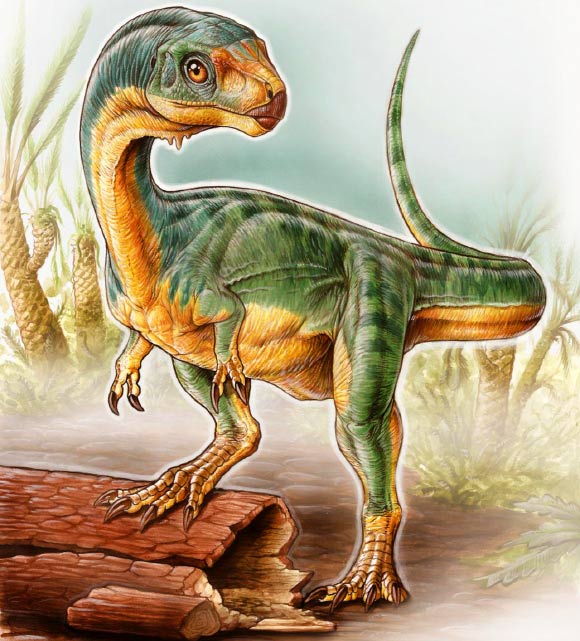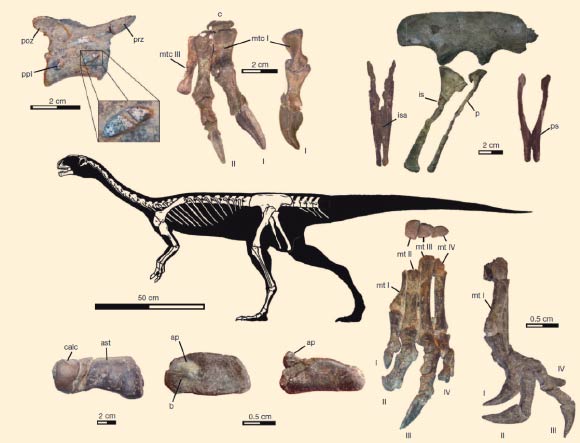An international team of paleontologists led by Dr Fernando Novas of the Bernardino Rivadavia Natural Sciences Museum in Buenos Aires has described a new genus and species of plant-eating dinosaur that roamed what is now Chile during the Upper Jurassic, roughly 145 million years ago.

Chilesaurus diegosuarezi was up to 3 meters long; the different parts of its body were adapted to a particular diet and way of life, which was similar to other groups of dinosaurs. Image credit: Gabriel Lio.
The new dinosaur, named Chilesaurus diegosuarezi, belongs to Tetanurae, a taxonomically and ecologically diverse group of theropod dinosaurs.The genus name, Chilesaurus, honors the country in which the ancient species was discovered.The species name, diegosuarezi, honors Diego Suárez, the 7-y-old boy who discovered the type specimen at the Toqui Formation in Aysén, south of Chilean Patagonia. Since Diego’s find, more than ten specimens have been excavated, including four complete skeletons.
“Chilesaurus diegosuarezi is the first complete dinosaur from the Jurassic Period found in Chile and represents one of the most complete and anatomically correct documented theropod dinosaurs from the southern hemisphere,” said Dr Novas, lead author on the study published in the journal Nature.
“Although plant-eating theropods have been recorded in North America and Asia, this is the first time a theropod with this characteristic has been found in a southern landmass.”
Dr Novas and co-authors are referring to Chilesaurus diegosuarezi as a ‘platypus’ dinosaur because of its enigmatic combination of characters that include a proportionally small skull and feet more akin to primitive long-necked dinosaurs.
The presence of herbivorous theropods was up until now only known in close relatives of birds, but the new dinosaur shows that an herbivorous diet was acquired much earlier than thought.
“Chilesaurus diegosuarezi can be considered a ‘platypus’ dinosaur because different parts of its body resemble those of other dinosaur groups due to mosaic convergent evolution. In this process, a region or regions of an organism resemble others of unrelated species because of a similar mode of life and evolutionary pressures,” said co-author Dr Martín Ezcurra of the University of Birmingham, UK.
“Chilesaurus diegosuarezi shows how much data is still completely unknown about the early diversification of major dinosaur groups.”
According to the team, the dinosaur represents one of the most extreme cases of mosaic convergent evolution recorded in the history of life.
Ref: Fernando E. Nova et al. An enigmatic plant-eating theropod from the Late Jurassic period of Chile. Nature, published online April 27, 2015; doi: 10.1038/nature14307 and http://www.sci-news.com.
Key: WFS,Riffin T Sajeev,Russel T Sajeev,World Fossil Society



 December 17th, 2015
December 17th, 2015  Riffin
Riffin 
 Posted in
Posted in  Tags:
Tags: 